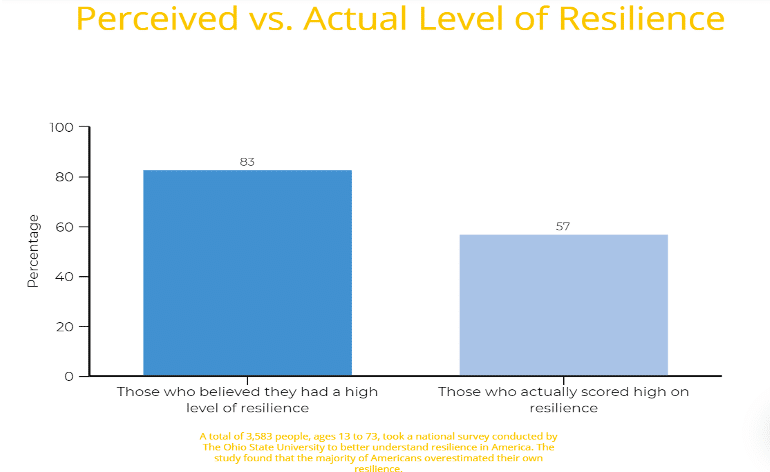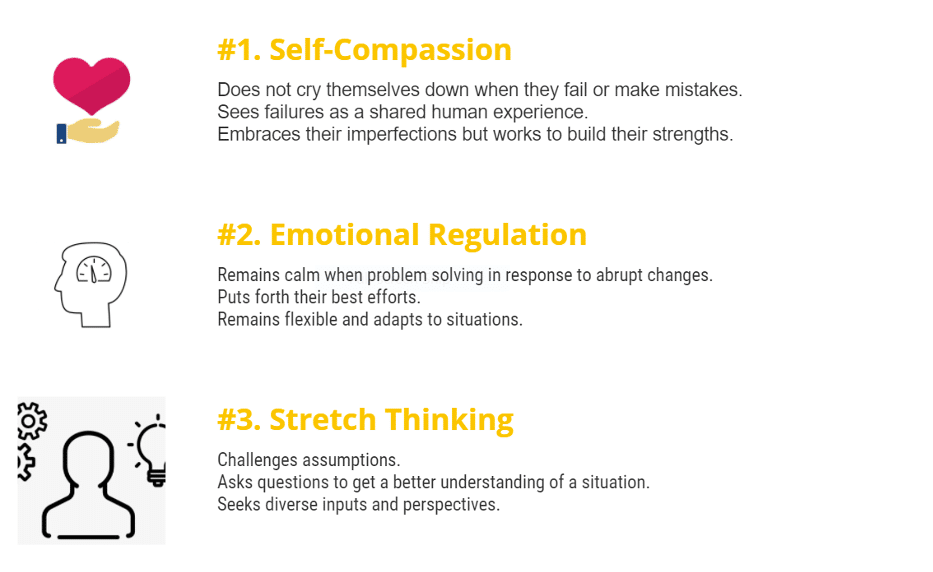How To Cultivate Resilience in Your Teams
It is quite simple: resilient organizations outperform non resilient organizations. According to a 2019 BCG study, “in the past four downturns since 1985, about one in seven companies increased both its sales growth rate and its profit margins. Despite the challenging circumstances, these successful companies grew their sales by 14 percentage points more and improved their margins by 7 percentage points more than the 44% of companies that declined on both parameters.” These companies were able to build their resilience muscles in the face of adversity and come out of it stronger. This may be the most volatile, uncertain, complex, and ambiguous (VUCA) world we have ever lived in. I dare to even say that we are in a time that organizations must embed resilience into the culture of their organizations, or they may be left for dust. Moreover, the data shows that we are not as resilient as we may think. In a 2020 national survey, it was seen that Americans overestimated their resilience level.
challenging circumstances, these successful companies grew their sales by 14 percentage points more and improved their margins by 7 percentage points more than the 44% of companies that declined on both parameters.” These companies were able to build their resilience muscles in the face of adversity and come out of it stronger. This may be the most volatile, uncertain, complex, and ambiguous (VUCA) world we have ever lived in. I dare to even say that we are in a time that organizations must embed resilience into the culture of their organizations, or they may be left for dust. Moreover, the data shows that we are not as resilient as we may think. In a 2020 national survey, it was seen that Americans overestimated their resilience level.
Positive Outcomes of Resilience

What is Resilience?
Resilience is the capacity to take on challenges, bounce back from difficulties and thrive at work. It is proactive. It is enduring. People with high levels of resilience are self-compassionate, make a habit of stretching their thinking and emotionally regulate.

Resilience Assessment
 Windle, Bennett, & Noyes (2011) conducted a study that reviewed nineteen resilience measures. The study resulted in only three measures receiving superior psychometric ratings, one of which is the Connor-Davidson Resilience Scale (CD-RISC). CMA Global Inc. recommends The Connor-Davidson Resilience scale as it is widely recognized, reliable and valid. There are three versions: The CD-RISC-2, CD-RISC-10, and CD-RISC-25. The 25-item scale can be completed in roughly 5-10 minutes unless while the 10 and 2 item scales can be completed in between 1 and 5 minutes.
Windle, Bennett, & Noyes (2011) conducted a study that reviewed nineteen resilience measures. The study resulted in only three measures receiving superior psychometric ratings, one of which is the Connor-Davidson Resilience Scale (CD-RISC). CMA Global Inc. recommends The Connor-Davidson Resilience scale as it is widely recognized, reliable and valid. There are three versions: The CD-RISC-2, CD-RISC-10, and CD-RISC-25. The 25-item scale can be completed in roughly 5-10 minutes unless while the 10 and 2 item scales can be completed in between 1 and 5 minutes.
Building Resilience through Coaching
At CMA, we believe in the power of coaching. We have worked successfully with clients in building their resilience. Below are two examples of ways in which we have helped our clients grow and develop.


Resilience Tips for Managers
Engage in holistic self-care & reflection: We cannot give our best to others if we are unable to bring our whole selves to work. It is important to be kind to ourselves and focus on our physical, mental, emotional, relational needs. We tend to associate personal growth with determination, persistence, and hard work, but the process often starts with self-care and reflection. Make self-care and reflection a habit.
Questions to ask: What do I need to do daily to maintain the newer version of myself and balance work and life better? Who am I now? Who do I want to be in six months? What can I do to optimize my self-care?
Connection & Purpose: It is your role to advocate for your team members and be their champion. Show genuine interest in who they are and not only the work they do. Know what their interests are, what they value and are passionate about. Brief check ins are simple but powerful. Get to them know them outside of just work. Recognize their wins and celebrate them.
Questions to ask team members: What work are you doing here that you feel is most in line with your long-term goals? Are you learning new things at work? What additional trainings would you like? What aspect of your job would you like more coaching on?
Provide resources & Support: It is your duty to remove any challenges for your team and provide a psychologically safe environment to discuss any of their fears and obstacles. Your leadership approach should not be a one size fit all. Tailor it to each employee’s needs. Advocate for team, make sure they have the resources they need, and talent, communication and decision systems are working for them.
Questions to ask: Do you feel your mistakes are held against you? Do you feel you can speak to me about challenging issues you face? Do you feel you can ask your team members for help?
Model Resilient Behaviors: It is important for you to model resilient behaviors that your team can emulate. It assures your team that their captain can get them through the storm, and it shows them that they can become as resilient as you.
Questions to ask: What would you like to learn more about resilience? How may I help you build your resilience?
Have resilient assessment protocol: Assess your team’s resilience via a survey and provide custom resilience training based on survey results. Design a system in place that monitors risks with early warning triggers to make timely decisions to minimize impacts of negative risks. Communicate effectively with your team to execute plans to achieve clearly defined outcomes to deal with risks and challenges.
Questions to ask: How can we improve on our system? What are the lessons learned from the challenge we overcame? What could we have done better?
Suggested Readings
Book: Prosilience: Building Your Resilience for a Turbulent World by Linda Hoopes
Brief Description: It is packed with insights and practical guidance you can act on to improve your quality of life immediately. The book especially helps you understand why some problems are more demoralizing than others. It shows how to convert bad problems into a challenge that energizes, which converts it into a learning and growing positive experience.
Book Description: Readers will first complete the Resilience Questionnaire to determine their own innate levels of resilience. Then, the system at the heart of The Resilience Factor will teach them to:
• Cast off harsh self-criticisms and negative self-images
• Navigate through the fallout of any kind of crisis
• Cope with grief and anxiety
• Bolster optimism, take chances, and embrace life
New York Times Article: What makes some people more resilient than others
By Shirley Godwin, M.S.
